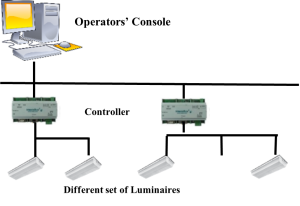Authors:
Banjara O.S.1, Bista D.2,3, Bista A.2,3, Bhusal P.4,5
1 Department of Mechanical Engineering, Kathmandu University, 45200 Dhulikhel, Nepal,
2 Department of Electrical and Electronics Engineering, Kathmandu University, 45200 Dhulikhel, Nepal,
3 Centre for Electric Power Engineering, Kathmandu University, 45200 Dhulikhel, Nepal,
4 Department of Electrical Engineering and Automation, Aalto University, FI-00076 Aalto, Finland, 4 Department of Optometry, Radiography and Lighting Design, University of South-Eastern Norway, 3616 Kongsberg, Norway.
Abstract
Daylight attributes to the aggregate of direct and indirect lights originating from the sun during the daytime. Integrating daylight with electrical lighting can serve as a means to lessen electricity costs for buildings. Geographic location and weather conditions facilitate most of the areas of Nepal to receive on average 12 hours of daylight and have huge energy-saving potential. However, the integration of daylight has not been admitted in the building code of Nepal. Moreover, contemporary architectural design lacks employment of techniques illustrated by illumination engineering to integrate daylight. This study analyses the plausibility and benefits of integrating daylight with electric light for a typical commercial building of Nepal employing the DIALux model and simulation. Simulation integrating energy-efficient electric light and daylight was done to observe illumination levels and light power density. For daylight performance, year-round conditions were observed for three different sky types. Modification of building architecture to integrate daylighting components was also studied. In the later part of the study, analysis was done to observe energy-saving potential and financial benefits. Results designated the plausibility of blending daylight with electrical lighting in the building for all-sky conditions. Extensive energy thrift was observed and was higher with added daylight components. Recommendations of the study to blend light sources and incorporation of daylight components are attainable with current technology and trend in Nepal with accompanying benefits of energy-saving, reduced operation, and reduced maintenance cost.
Keywords: Daylight, DIALux, Energy Efficient, Illumination, Light Power Density
| Original language | English |
|---|---|
| Title of host publication | Proceedings of the Conference CIE 2021, September 27-29, 2021 |
| Publisher | CIE International Commission on Illumination |
| Number of pages | 9 |
| ISBN (Electronic) | 9783902842299 |
| Publication status | Published – 2021 |
| MoE publication type | A4 Article in a conference publication |
| Event | CIE Midterm Meeting – Kuala Lumpur, Malaysia Duration: 27 Sep 2021 → 29 Sep 2021 https://malaysia2021.cie.co.at/welcome-cie-2021 |
Conference
| Conference | CIE Midterm Meeting |
|---|---|
| Abbreviated title | CIE |
| Country/Territory | Malaysia |
| City | Kuala Lumpur |
| Period | 27/09/2021 → 29/09/2021 |
| Internet address |
Access to Document
Cite this:
Banjara, O. S., Bista, D., Bista, A., & Bhusal, P. (2021). Integration of daylight with electric lighting in commercial buildings: a case study from Nepal. In Proceedings of the Conference CIE 2021, September 27-29, 2021 CIE International Commission on Illumination. https://doi.org/10.25039/x48.2021.PO56
This output contributes to the following UN Sustainable Development Goals (SDGs)

